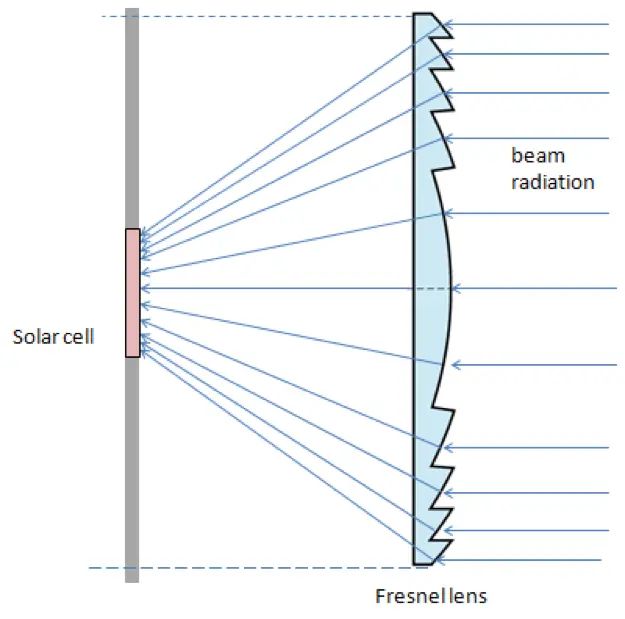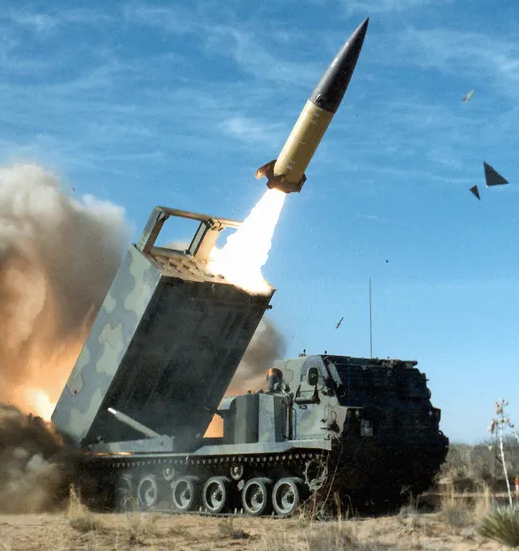cross-posted from: https://slrpnk.net/post/24690127
Solar energy experts in Germany are putting sun-catching cells under the magnifying glass with astounding results, according to multiple reports.
The Fraunhofer Institute for Solar Energy Systems team is perfecting the use of lenses to concentrate sunlight onto solar panels, reducing size and costs while increasing performance, Interesting Engineering and PV Magazine reported.
The “technology has the potential to contribute to the energy transition, facilitating the shift toward more sustainable and renewable energy sources by combining minimal carbon footprint and energy demand with low levelized cost of electricity,” the researchers wrote in a study published by the IEEE Journal of Photovoltaics.
The sun-catcher is called a micro-concentrating photovoltaic, or CPV, cell. The lens makes it different from standard solar panels that convert sunlight to energy with average efficiency rates around 20%, per MarketWatch. Fraunhofer’s improved CPV cell has an astounding 36% rate in ideal conditions and is made with lower-cost parts. It cuts semiconductor materials “by a factor of 1,300 and reduces module areas by 30% compared to current state-of-the-art CPV systems,” per IE.
Banned in North America in 3… 2…
Oh don’t worry, I’m sure the capitalist system will manage to fuck it up somehow.
I have not read the article yet, but I will be doing so after posting this. But from what I understand, concentrated cells via lenses already exist. The problem with them was keeping them cool.
Going to go read the actual article now.
Edit: Well, the article was very sparse on details. From what I understand of the comments, what’s really been done here is making cells that can stand the kind of heat that would be focused onto them from the glass.
I want to say I saw a video about this a year ago or so, but it was more solar thermal, where you focus a bunch of mirrors onto a single point high up on a tower, and it’s cooled by molten salt. But as I said, that’s solar thermal, not solar power electricity.
Yeah the problem has always been that solar panels only really like to operate within a very narrow temperature band. It’s why you can’t just plate the Sahara desert in solar panels. In theory that would generate loads of power but the heat of the desert is way outside of their operating range.
There’s been loads of ideas to heat/cool solar panels, the problem up until now has always been to do that without cutting into the panel’s efficiency so much that it isn’t worth doing.
But there’s been videos on YouTube of people cooling solar panels with plasma cooling and phase change materials for a few years now.
I thought this has already been done. Guess there’s some nuance to it that is above my understanding of it.
Anyhow, advancements in solar are cool in my book.
Hey it’s those guys that invented MP3s.
That was Fraunhofer IIS not ISE.
Fraunhofer IIS and Fraunhofer ISE are part of the same organization.
They are different institutes in the same Fraunhofer Society.
It really whips the sun’s ass.
Lossy compression of sunlight?
I’m not sure what to think about the Fraunhofer institute in general. They have made some nice discoveries/inventions in the past, such as audio compression algorithms and such. That is why i hyped them for a bit.
But they really disappointed me with their writings on solar panels in the past few years.
They said that the efficiency of solar panels today is too low to deploy them widely in practice, which is simply not true. They tried pushing Perovskite solar cells for no reason.
I’m not sure what to think about this article’s idea. On one hand, adding lenses to solar parks makes them significantly more complicated and therefore expensive to build. Also, if the parks have complicated physical forms, they’re more susceptible to wind, and that could damage them.
On the other hand, yes, adding lenses means you need fewer actual solar panels for the same amount of energy harvested.
I’ll therefore put it in the category of inconclusive inventions, together with the idea of adding a motor to the solar panels so they can track the sun. That would also make the solar panels more efficient, but also more complicated and more prone to mechanical failure.
I’d like to know what they’re going to do about the heating issue. Concentrating solar radiation carries with it an increased heat load. And heat reduces solar PV efficiency. I’m already losing about 30% in summer when the panels heat up.
This was my first question too! I thought heat makes them wear out faster.
It does. Also seems weird nobody thought of a magnifying glass before.
But its also the beauty in science. Now somebody else thought about it, and they might work harder to fix the next problem: Heat.
If that gets better now, solar panels will increase in output even more. There are so many technologies going into one product, and each field have its own experts.
I’m excited.
They probably did, but like they said, the heating is probably the issue.
I can see them adding a cooling element. Maybe even water cooling.
well, adding lenses kinda requires motorizing the panels to track the sun, right? otherwise the “hot spot” is going to move around across the day/year
is there a way to shape the lens to mitigate this?
You make them convex.
You can shape them that no matter how the light falls on it, it will align to the center. Kind of like how satellite dishes work but in reverse.
You can shape them that no matter how the light falls on it, it will align to the center. Kind of like how satellite dishes work but in reverse.
how do you do this, actually? I’m curious about the details because I just watched a video on compound parabolic reflectors, haha
a regular (ideal) convex lens with a single focal point will have the image move around as the light source moves across the sky. AFAIK satellite dishes tend to be paraboloids, which focus parallel rays onto the focal point, and if you change the angle of the light source, you’ll start losing focus. Stuff like the DSN and radio telescopes absolutely do have to aim and track their targets (or are forced to follow the rotation of the earth).
satellite dishes that are aimed towards geostationary satellites don’t have to move (because their targets are stationary in the sky), while stuff like starlink tracks targets with a phased array.
Could have some refraction or hologram thing that bends the light the right way, maybe? Or like a matte glass that equalises the load.
Or why not just use (big) mirrors?
Won’t help with heat ofc!
Or why not just use (big) mirrors?
I mean, this is a thing with solar concentrators already, haha
and for those the heat is a feature :p
The only thing slowing down the transition from fossil fuels to renewables is the same impediment it has always been: oil money protecting itself.
Just wanted to drop a comment.
I love solar. It’s the best form of energy that’s attainable by the average person.
Concentrating solar cells have been around for decades, but I suppose the efficiency Fraunhofer achieved here is nothing to sneeze at.
Wait for something fucking idiotic like:
“U.S. government to implement 5,000% tax on new solar technology…”
“also, revenue from new tax will be used to build new coal mines staffed by concentration camp inmates 1”
Solar is too woke and Marxist for the current US government.
Real men burn shit /s
Solar panels are already quite cheap. What we need is much cheaper grid forming inverters so we can stop destabilizing the grid with solar.
If the cost of panels drops significantly, there would be more capital available to spend on inverters, even if they stay at the current prices, still decreasing the cost of deployment. But yes. 😄
Grid forming will just mean the keep running the house when the power goes off, it’s not safe for them to be pushing power when it’s disappeared, that has been set by regulation in many countries.
Small scale installations on regular houses are probably not the best for grid forming. Any pv installation with grid forming capability would be required to give some control to the grid operator because it’s their job to keep the grid stable.
What you describe is more like black start, providing power to the grind when it is down. This has to be controlled well, and only a few plants need to be capable of it.
Grid following means something like whatever the grid does, the inverter injects power supporting it. A grid forming generator or inverter also follows the grid somewhat, but tries to get it to an optimal condition. This entails things like voltage control by reactive power, frequency control by operating reserve, fault ride trough capability and so on. Many of those are naturally provided by large conventional power plants using synchronous generators like gas, nuclear or hydro. For inverter based systems, they have to be considered explicitly. For battery storage most are relatively easy to implement, some also in solar inverters. The tech exists, but yes, in some countries the regulations have not kept up with rapid expanse of inverter based power generation in the last years.
What are concentrating photovoltaics? One of the ways to increase the output from the photovoltaic systems is to supply concentrated light onto the PV cells. This can be done by using optical light collectors, such as lenses or mirrors. The PV systems that use concentrated light are called concentrating photovoltaics (CPV). The CPV collect light from a larger area and concentrate it to a smaller area solar cell. This is illustrated in Figure 5.1.

Also, from the article - 33.6% efficiency in real-world conditions:
A 60 cell-lens prototype was studied for a year. In “real-world” conditions, CPVs achieved up to 33.6% efficiency. The 36% mark was posted at 167 degrees Fahrenheit. The prototype showed no signs of degradation, according to IE.
A lighthouse uses the same lens, just with the light coming from the inside. Since this is old knowledge, what is the drawback? Why isn’t this widespread?
My completely uninformed guess:
-
The lens and assembly costs too much compared to just more solar panels
-
The lens/panel combo is so bulky/prone to failure it becomes unreasonable to actually install/use.
Adding to what Eldest_Malk said: They aren’t just putting a new type of lens over standard solar cells, they are also designing/fabricating custom cells to work with the lenses. [I’m not a PV expert, but the fact that the IEEE paper focuses so much on the cells and not just the lenses leads me to believe that the lenses can’t just be used with whatever standardized solar cells are on the market]
id guess a lot went into designing a solar cell that could take being heated to 167F without losing efficiency or breaking. I think most common house solar panels have a temperature coefficient listed on their datasheet that measures how much its ability to generate power decreases per every degree above 77F
They mention standardisations and cost savings in their paper, as well as solving the heat load per cell problem by decreasing cell size. They also mention that there’s been a lot of micro-CPV module designs but that they haven’t been scaled up. Some quotes below:
Various researchers and developers have been exploring different micro-CPV module designs [5], [6], [7], [8], [9], [10], [11], [12], [13]. Most approaches have been tested on small prototypes or minimodules, while fewer have been realized with aperture areas (Aap) above 200 and 800 cm2,[…]
By decreasing the sizes of the primary optics and the solar cells, the heat load per cell is minimized. This reduction allows for sufficient heat spreading via the circuit board, enabling the direct assembly of solar cells onto the circuit board on glass.
At Fraunhofer ISE, we have developed a micro-CPV module concept [17], [18], [19], [20], [21], which is based on parallelized manufacturing processes and commercially available components.
The final module features a panel size of 24” × 18”, which is a standard in the microelectronics industry, facilitating machine adaption without necessitating special adjustments.
I suspect that the lens makes the whole solar assembly more directional and the Sun moves in the sky.
Commercial solar panels often move with the sun, too
The overwhelming majority of them don’t, traditionnal rooftop installs don’t either.
The article states that it’s smaller and cheaper. The reason it’s not widespread is that they just invented it.
It is interesting that someone just recently thought to use a fresnel lens with photovoltaics when they’ve existed for hundreds of years
It isn’t that. They have been talking about Fresnel lenses on PV for decades. It’s solving the heat issue and the size issue. A Fresnel lens gathers a large area of light and focuses it down, including focusing the heat. Normal PV cells cannot handle that amount of heat.
This is exactely how most inventions are made: put together two things from different realms that might have a good fit.
Just wait a few years and they will find a way to use the light directly instead transferring it into electricity. There‘re some IC‘s that already use light instead of voltage to compute.
costs too much
Various trade wars are changing those economics.
-
I am not a scientist so please correct me if I am off base, but did it really take them this long to attempt to focus light onto PV cells using a fresnel lens?
My hobby as a 15 year old was buying broken projectors to harvest the fresnel lenses in the lamp on top. They could focus sunlight so powerfully that you could burn shit. I didn’t do that, surprisingly. I was like Marge Simpson, I just thought they were neat.
OK, take that Fresnel lens that you were using to melt pennies and then focus it on a PV cell that is also made of metal. What might be the expected response? The science in this case is making PV cells that can handle the intense heat.
That makes sense. If I understood everyone clearly, it’s not the idea to use a fresnel that’s new here, it’s the fact that we just haven’t yet had anything capable of withstanding those temperatures and still allowing for the piezoelectric effect to happen.
IIRC, this sort of thing has been floated before. The issue is that you can’t just focus that much light on the solar cell. It’ll burn out.
Not being any kind of solar energy expert, my initial thought was how the cell’s would hold up under the increased heat, and what technology (if any) they’d be using to monitor/mitigate. The article does briefly mention the cells achieving ~33% @ ~167° F, and does mention (what seems to be tangential) technologies that allow for cells to be nailed down as if they were shingles.
My guess is that it isn’t that they finally using techniques that seem obvious to us, but that they’ve developed supporting tech to mitigate the detrimental effects of using magnification.
i guess a lot of research projects are just there to give the researchers something to do and money, and i’m sure the idea of using lenses has been floated before.
the thing is that it’s not really as good an ideas as it originally seems. After all, you need heavy solid lenses that you have to install above all solar panels, and the cost of that is not negligible. On top of that, there’s other problems that others have already mentioned.
Adding to what the others wrote, solar cells become less efficient at power conversion (light -> electricity) as the temp of the solar cell materials (semiconductors) increases. So the issues is how to get more photons to the semiconductor without heating it up.
Would a UV filtering lens help? Do solar cells generate more power from certain parts of the light spectrum?
I feel like this is one of those discoveries thats like, well duh of course it would work that way
Remember gang, stuff like this means 10-15 years before you see it in market.
What was the stuff like this of 15 years ago ?
Honestly solar panels and electric cars. I know those existed over 15 years ago, but they weren’t serious market options until like 5 or so years ago.
First known electric car was built in 1837. Yes, 1837, not 1937. In 1910’s and 1920’s there were tens of thousands electric cars in USA and Europe. So electric cars has been here for a long time right now.
First (known) solar panel was built in 1954.
Yes, hence the name motor vehicle. His point was modern implementations of EVs and solar panels. 10-20 years is very common for transition to production. It takes time to scale up manufacturing and that’s only after the manufacturers have actually decided/agreed to take on the risk of a new product line. Lithium ion batteries were invented in the 80s, but didn’t see broad deployment until the 00s.
More expensive and less efficient.











